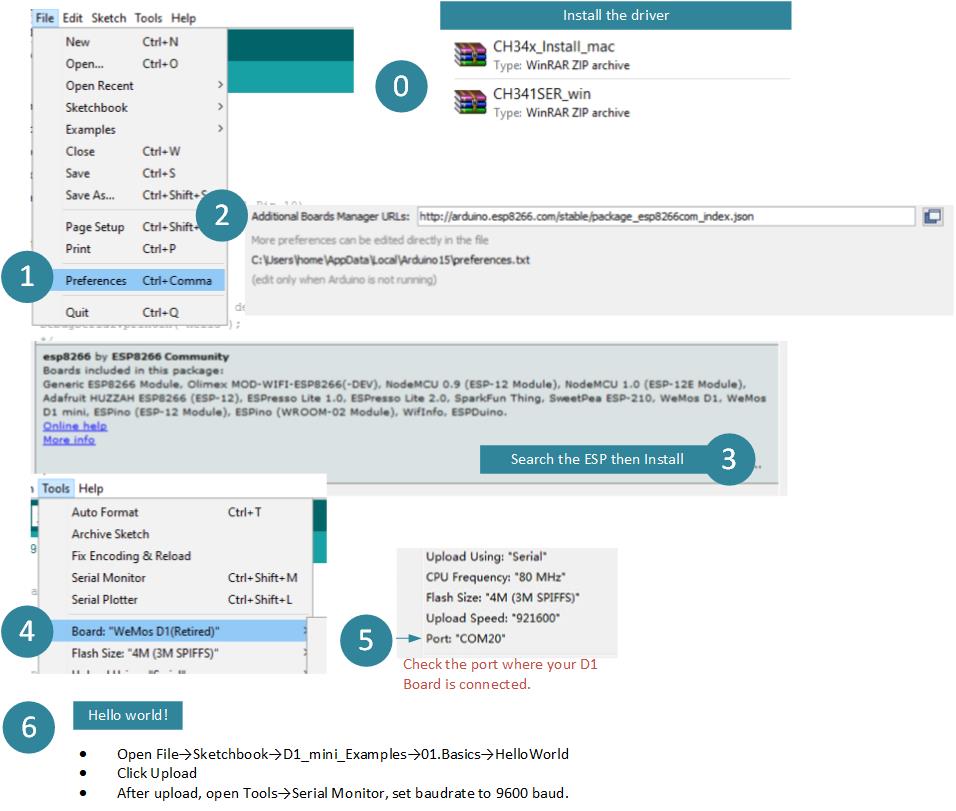In this illustration we will going to integrate the D1 ESP8266 ESP12-E Wi-Fi enabled microcontroller with Arduino IDE, The D1 contains the popular ESP8266 12-E a Wi-Fi enabled MCU board this board can be easily use and coded from Arduino IDE by installing the required driver and the software it is also compatible with popular NodeMCU w hich is driven by LUA Script best for Environment to build your own “Internet of Things” projects.
hich is driven by LUA Script best for Environment to build your own “Internet of Things” projects.
The D1 board has a full USB interface on-board along with a switch mode power supply that accepts voltages between 7 to 12v DC into the DC socket and gives the board a solid stable low ripple 5v at 1 amp. Note that the ESP8266 itself is a 3.3v and all the IO is using 3.3v. All the pinout are nearly labelled and you can just add your circuitry easily.
Using the D1 ESP8266 board is easy after installing the USB driver you can just add a board profile to the Arduino IDE, select the port, change the baud rate, then upload the sketch via USB or even over the air. The ESP8266 runs at a much faster CPU speed and it has a memory onboard to store your data.
Project Done by D1
Please note:
- If you are new to Arduino, please become familiar with development environment before using ESP8266
- You need Arduino IDE v1.6.5 not 1.6.6
Specifications:
- Microcontroller module – ESP8266 ESP12E – 4MB Flash, 80 MHz
- Board format – Arduino Uno R3
- I/O voltage – 3.3V
- Power supply: 7~24V DC, 5V DC 1A output
- 11 digital input/output pins
- 1 analogue input (3.3V max input)
Installation Guide / Integration
Downloads
Download driver for windows operating system | Zip
Download driver for Mac OS operating system | Zip
Download driver for Linux Operating System | Not Required





